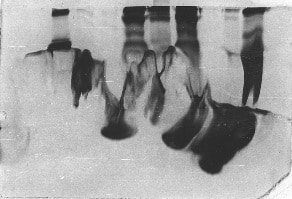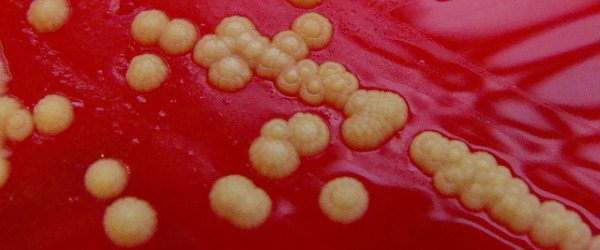So, you’ve done your experiment, prepped your samples, and run your SDS-PAGE gel. Now it’s time for the all-important transfer step, that tricky point that will determine the quality of your Western blot.
Transfer times are empirical and based on your own particular samples, which means that there is no easy way to determine how long you need to run the transfer in order to get complete transfer of all your proteins. Instead, you will need to optimize the transfer time and conditions for yourself, based on the equipment you use and the proteins you are working with.
So how do you know when your transfer is complete? Here are a few good controls you can use to monitor transfer efficiency:
Look for complete transfer of the molecular weight ladder
Use a pre-stained protein ladder to track transfer of proteins from a gel to a membrane. The rest of the proteins on your gel will of course be invisible, but you can easily see if the brightly colored ladder bands are still in the gel, or have transferred completely to the membrane. Keep in mind that proteins of different sizes will migrate at different speeds: there is no magic moment at which all the proteins jump from the gel to the membrane. Instead, you are aiming for a point at which most of the larger proteins have migrated to the membrane, and most of the smaller proteins are still on the membrane but not through it. If you use a ladder where each band is stained a different color, this can help you keep track of the transfer efficiency of differently sized proteins. Remember, if you’ve opened your transfer cassette to “peek” at the ladder, this will introduce air bubbles to the transfer stack – so you probably want to use this technique to optimize transfer times when you’re not running important samples.
Enjoying this article? Get hard-won lab wisdom like this delivered to your inbox 3x a week.

Join over 65,000 fellow researchers saving time, reducing stress, and seeing their experiments succeed. Unsubscribe anytime.
Next issue goes out tomorrow; don’t miss it.
After transfer, stain the SDS-PAGE gel with Coommassie blue
Another simple way to monitor the efficiency of protein transfer is to stain the gel with Coommassie after your transfer is complete. This is a quick and easy procedure that will give you a good idea of how much protein is still in the gel: if the gel is mostly clear, than your transfer was successful, but if most of your gel shows blue bands, then your transfer needs to run longer. Again, this is a “post-hoc” check for transfer efficiency: once you’ve stained the gel, you won’t be able to set it up for a second transfer. Instead, you’ll need to run a second gel and do the transfer again using the adjusted conditions. So remember to do this test before you run your precious samples!
Transfer your gel onto two membranes
The two methods described above are most useful for determining whether the transfer duration was too short. To test is your transfer is too long, try inserting two membranes into your transfer stack, one right behind the other. Then, go ahead and blot both membranes (be sure to label which was farthest away from the gel!). If your transfer conditions are good, then the majority of your protein will be on the first membrane (closest to the gel). If you are transferring too long, you will detect protein on the second membrane as well. This is more likely to occur to the smallest proteins first so pay particular attention to where the lower molecular weight ladder bands should appear. You can also try staining the second membrane with Coommassie blue, which will show you all of the proteins that have transferred to that layer, and not just your protein of interest.
For more information on these transfer controls, check out this video from Agrisera.








